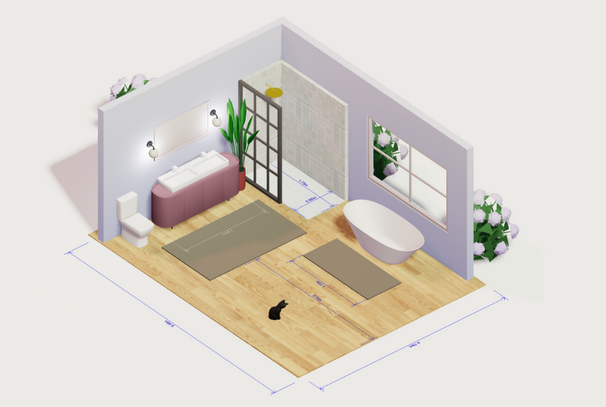- Home
- Articles
- Architectural Portfolio
- Architectral Presentation
- Inspirational Stories
- Architecture News
- Visualization
- BIM Industry
- Facade Design
- Parametric Design
- Career
- Landscape Architecture
- Construction
- Artificial Intelligence
- Sketching
- Design Softwares
- Diagrams
- Writing
- Architectural Tips
- Sustainability
- Courses
- Concept
- Technology
- History & Heritage
- Future of Architecture
- Guides & How-To
- Art & Culture
- Projects
- Interior Design
- Competitions
- Jobs
- Store
- Tools
- More
- Home
- Articles
- Architectural Portfolio
- Architectral Presentation
- Inspirational Stories
- Architecture News
- Visualization
- BIM Industry
- Facade Design
- Parametric Design
- Career
- Landscape Architecture
- Construction
- Artificial Intelligence
- Sketching
- Design Softwares
- Diagrams
- Writing
- Architectural Tips
- Sustainability
- Courses
- Concept
- Technology
- History & Heritage
- Future of Architecture
- Guides & How-To
- Art & Culture
- Projects
- Interior Design
- Competitions
- Jobs
- Store
- Tools
- More
Best Architectural Software for Students in 2025
In 2025, digital tools aren’t just convenient — they’re essential to learning, drafting, modeling, and showcasing your designs. With so many programs out there, it can be hard to choose the right one.

If you’re an architecture student, you already know that creativity is only half the battle. The other half? Finding the right software to bring your ideas to life.
In 2025, digital tools aren’t just convenient — they’re essential to learning, drafting, modeling, and showcasing your designs. With so many programs out there, it can be hard to choose the right one.
That’s why we’ve put together this guide to the best architectural software for students in 2025. Whether you’re building your first digital portfolio or pushing the limits of 3D modeling, these architect tools are designed to help you learn, grow, and stand out.
Table of Contents
ToggleBest Architectural Software for Students in 2025
From intuitive drafting software to professional-grade BIM tools, the programs below cover every stage of the design workflow — without overwhelming beginners.
-
SketchUp Studio – For Fast, Visual Thinkers

SketchUp has long been a favorite in architecture schools for a reason — it’s incredibly easy to pick up, and in 2025, the Studio version goes even further. It’s ideal for quick iterations, conceptual modeling, and generating clean visuals that make your student projects pop.
You get access to 3D modeling tools that work well with a wide variety of design workflows, and its open ecosystem of plugins means you can customize it as you grow. It’s not as heavy on documentation as BIM software, but for concept development and presentations, SketchUp is hard to beat.
Best for: Beginners and conceptual designers who want speed and flexibility.
Includes: Core 3D modeling tools, LayOut for drawing sheets, and Sefaira for energy analysis.
-
Rhino + Grasshopper – For Parametric Designers and Experimenters

Rhino continues to be one of the most versatile architectural design software choices for students, especially when paired with Grasshopper. Together, they create a sandbox for algorithmic design, organic forms, and custom workflows.
It’s not the easiest learning curve, but if your school offers workshops or your curiosity pulls you toward generative design, this combo will stretch your skills. Rhino is often used in competitions and advanced architecture apps due to its flexibility in handling non-standard geometry.
Best for: Students interested in computational design and custom scripting.
Learning curve: Moderate to steep, but worth the climb.
-
Revit – For Real-World BIM Training

No list of architectural software would be complete without Revit. It’s the gold standard in BIM software, and while it’s complex, learning it early gives you a huge edge in the professional world.
In 2025, Revit’s interface has become slightly more student-friendly, and Autodesk offers free licenses for students. From drafting to modeling to schedules and structural coordination, Revit covers it all. It’s the kind of tool that teaches you how large-scale architecture actually works.
Best for: Students looking to work in architectural firms or large-scale design.
Key features: BIM collaboration, parametric components, integration with CAD programs like AutoCAD.
-
AutoCAD – Still Relevant in a BIM World

Some call it old-school, but AutoCAD remains a vital drafting software, especially when precise 2D drawings are needed. Its value lies in the fundamentals — it teaches precision, layering, and lineweight management.
In architectural education, AutoCAD often serves as the bridge between initial sketches and digital modeling. Many firms still rely on DWG files, so getting comfortable with this software is a smart move.
Best for: Students learning technical drawing and documentation.
Pro tip: Master the shortcut keys; they’ll save you hours over time.
-
Blender – For Powerful, Free 3D Rendering

Blender has exploded in popularity not just among 3D artists but also architecture students. Why? It’s free, powerful, and getting better each year. By 2025, Blender offers even more advanced rendering tools and real-time visualizations.
It’s a great secondary tool if you’re building a digital portfolio or need compelling visuals. While it’s not a drafting tool per se, Blender supports importing models from other software and adding photorealistic textures and lighting.
Best for: High-quality renders and animation.
Tip: Combine Blender with the best screen recorder for Mac or Windows to create impressive project walkthroughs or animated presentations.
-
Archicad – A Sleek Alternative to Revit

Archicad is another BIM software option, often praised for its elegant interface and intuitive logic. It’s well-suited for design-focused workflows and allows for quick switching between 2D plans and 3D models.
Unlike some bulkier programs, Archicad runs smoothly on mid-range machines, which is a win for students without workstation-level hardware. Plus, the built-in collaboration tools are great for group student projects.
Best for: Design-oriented BIM modeling with real-time feedback.
Also great for: Lightweight design workflows and team-based assignments.
-
Morpholio Trace – Mobile Design on the Go

For tablet users, especially those with iPads, Morpholio Trace is one of the best architecture apps around. It mimics the feel of sketching over trace paper but adds digital flexibility like layers, color coding, and augmented reality overlays.
In 2025, the app has added more collaborative features, making it useful for sharing quick design ideas during reviews or on-site visits. It bridges the gap between analog sketching and digital design.
Best for: Hand sketching lovers and iPad users.
Bonus: It integrates with cloud drives for easy access across devices.
Final Thoughts
For architecture students in 2025, mastering the right tools is just as important as developing your creative vision. The best architectural design software not only helps you draft, model, and render — it also prepares you for the real-world challenges of architectural practice.
Whether you’re focused on technical precision, conceptual experimentation, or polished presentations, there’s a tool tailored to your needs. And while no single program can do it all, building a thoughtful toolkit will take your student projects — and your future career — to the next level.
- Architectural Softwares
- best 3D modeling software for architecture students
- best architectural drafting software for learners
- Best Architectural Software
- best architectural software for students 2025
- best architecture student software
- best architecture visualization software for students
- best beginner architecture software 2025
- best BIM software for students
- best CAD software for architecture students
- best digital architecture tools for students
- best free architectural software for students
- best parametric design software for students
- best rendering software for architecture students
A licensed architect with hands-on studio experience, I translate complex design ideas into clear, engaging stories for a global audience. As a seasoned content writer and editor, I craft articles, project features, and thought-leadership pieces that illuminate emerging technologies, sustainable practices, and cutting-edge design trends—always with an architect’s eye for detail, accuracy, and narrative flow. My goal is to bridge practice and publication, giving fellow professionals and curious readers alike the insight and inspiration they need to push architectural boundaries.
Submit your architectural projects
Follow these steps for submission your project. Submission FormLatest Posts
10 Best Architecture Tools of 2026: Programs, AI, and iPad Apps
A comprehensive guide to the most influential architecture tools and AI platforms...
Beginner’s Guide to Arcadium 3D: Your First Room Design in 5 Easy Steps
Designing a room used to mean wrestling with tape measures, mood boards,...
Architectural Design Software Tools for Student Design
Many architecture students want fast ways to explore ideas. Some of them...
Lumion 2024.3: It’s Time to Enhance Urban Visualization
With 5x faster video rendering, a remarkable improvement in material quality, and...












Leave a comment